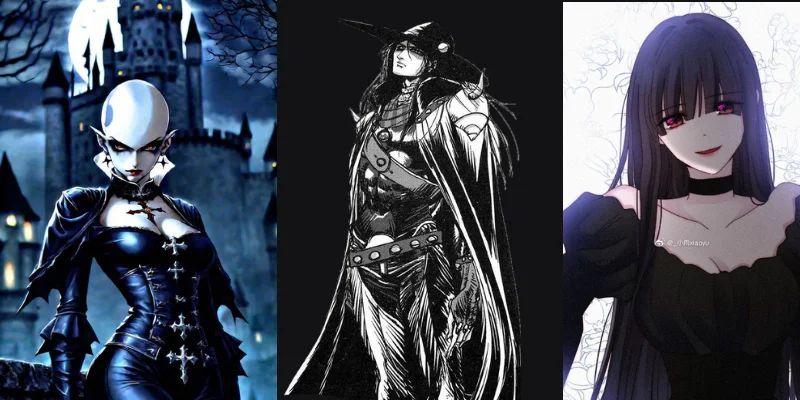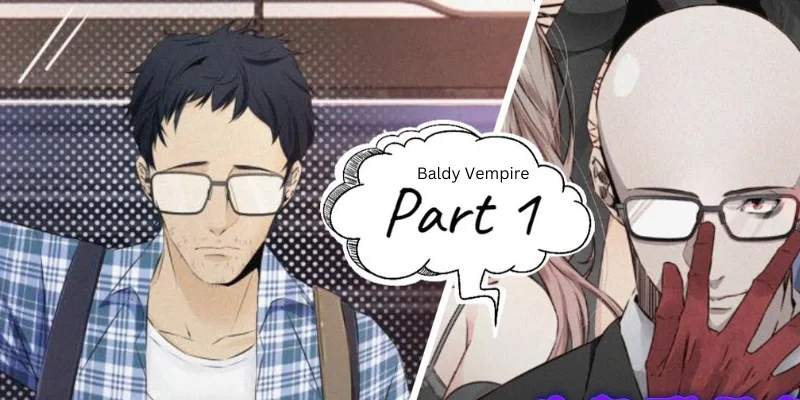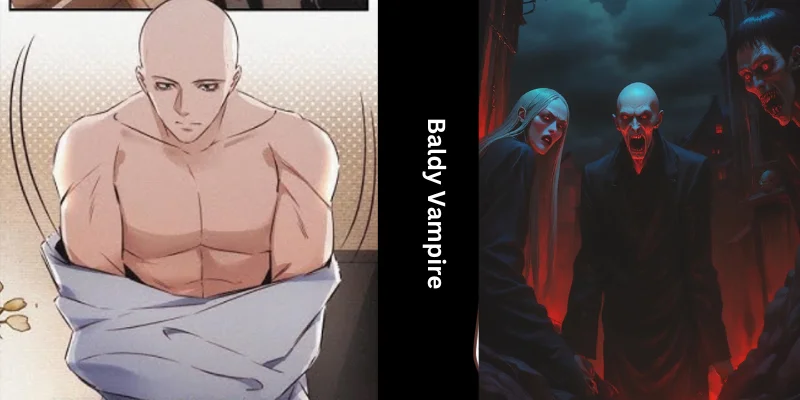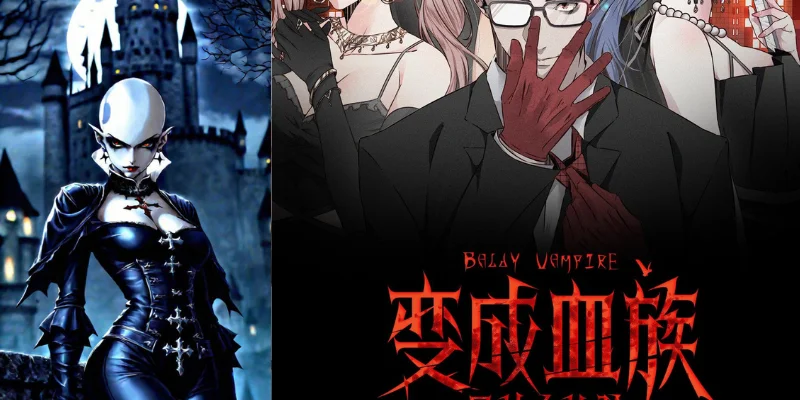Baldy vampire manga refers to a genre of Japanese comics featuring protagonists who are bald vampires. Known for dark themes, stylized aesthetics, and absurdist humor, baldy vampire manga has developed an enthusiastic cult following within the manga fan community. In this comprehensive guide, we’ll explore the history, evolution, and key features of this quirky genre.
Origins of Baldy Vampire Manga
Baldy vampire manga traces its roots back to the early 1970s in Japan. The subversive, countercultural comics movement of the late 1960s paved the way for edgier and unconventional works like baldy vampire manga.
Early progenitors of the genre include manga like Devilo and Bald Bloodsucker in the mid-1970s. These featured bald anti-hero vampires in absurdist, darkly comedic storylines. Over the next decade, the genre grew with series like The Vengeful Cueball and Fangboy.

Influences included Gothic horror, exploitation films, and the “ero-guro” movement’s focus on eroticism, psychological drama, and macabre themes. The distinctive baldy vampire protagonist archetype also drew from yakuza anti-heroes in Japanese pop culture.
Pioneering Baldy Vampire Manga Series
Several pioneering manga helped establish the conventions of baldy vampire manga Novel:
- The Undead Scalpchads (1982-2001): One of the longest-running and most influential baldy vampire manga. Followed the misadventures of four vampire roommates.
- Fang Fighter (1984-1993): Featured a bald martial artist vampire anti-hero. Known for its stylized action and fight scenes.
- Cueball V (1987-1996): A horror-comedy series starring a wisecracking, fourth-wall-breaking bald vampire. Hugely popular in the late ’80s.
These series cemented the genre’s reputation for oddball humor, graphic horror, and bald leading men. Their success paved the way for an explosion of baldy vampire manga in the 1990s.
Artistic Style and Themes
Baldy vampire manga has a distinctive artistic style. Protagonists are completely bald, with exaggerated facial features like bulging eyes and fangs. Panels feature dense cross-hatching and messy, kinetic linework.
The stories often blend horror, absurdist comedy, eroticism, and social satire. Revenge, vigilantism, and anarchic rebellion are common themes. Much baldy vampire manga critiques conformity and traditional values through the lens of black comedy and hyper-violence.
Subgenres and Variations
The baldy vampire manga genre encompasses different subgenres and variations:
- Action: Focus on vampire anti-heroes engaged in bloody combat. e.g. Bald Battle
- Horror: Emphasize graphic body horror and vampiric terror. e.g. Feeders
- Comedy: Absurdist plots played for laughs. e.g. The Bald and the Restless
- Romance: Baldy vampire protagonists involved in melodramatic relationships. e.g. After Dark
There are also eclectic fusions with other genres like mecha, science fiction, fantasy, and samurai manga.
Impact and Legacy
At its peak in the 1990s, baldy vampire manga boasted millions of dedicated fans. It left a mark on both Japanese and global pop culture.
The genre inspired characters in anime like Master of Mosquiton and fashion trends like “baldy gothic.” Live-action adaptations like 2002’s Bald Blood brought baldy vampires to film. To this day, the archetype remains an iconic figure in manga.
Baldy vampire manga also paved the way for future absurdist manga genres like sharkboy horror and sentient bean sci-fi. Its visually kinetic style and satirical sensibility can be seen in many modern manga aimed at teens and young adults.
Notable Baldy Vampire Manga Artists Today
Though past its heyday, baldy vampire manga continues today through the work of niche creators like:
- Yamato Murasaki: His series Yamagata puts a baldy vampire in Feudal Japan. Praised for its ukiyo-e-inspired artwork.
- Shou Kazami: Contemporary creator behind Suck City, a gory supernatural police drama starring a bald detective vampire.
- Akira Shibuichi: Their new title Bloodshine modernizes the genre with themes of social media and influencer culture.
These artists keep the genre alive and evolve it in new directions for the modern era.
Current Trends and Future Outlook
Recent baldy vampire manga often incorporates current trends like:
- Nostalgic homages: Revisiting the genre’s roots through self-aware pastiches and tributes
- Wider character diversity: More representation of women, LGBTQ+ folks, and people of color as baldy vampire protagonists
- New settings and genres: Exploring baldy vampires in genres like sci-fi, fantasy, and non-fiction

The genre retains a devoted fanbase eager for new experimental and progressive spins on the classic formula. With skilled creators at the helm, baldy vampire manga continues to find new life.
Recommended Entry Points for New Fans
Those new to baldy vampire manga should consider these acclaimed, approachable classics:
- Bald Blood (1994): A perfect introduction to the genre’s blend of horror, comedy, and visual style.
- They Bite! (1999): A hilarious but gory series following two vampire roommate slackers.
- Lady in the Dark (2003): An action-horror baldy vampire story with a strong female lead.
For an overview of the genre’s history, check out the essential anthology The Big Bald Book of Vampires.
Overlooked Gems for Fans
Once familiar with the genre, dedicated baldy vampire manga fans should hunt down these underappreciated hidden gems:
- Scar-Crow (1993): A disturbing psychological horror about a telekinetic bald vampire. Haunting and surreal.
- Midnight Hoops (1996): A zany sports comedy about an all-vampire underground basketball league.
- Grave Matters (2005): Follows a group of senior citizen bald vampires living in a retirement community. Dark humor abounds.
Digging deeper will uncover many creative, boundary-pushing series that deserve more recognition from fans.
Controversies and Criticisms
Like many subcultural genres, baldy vampire manga has faced controversies and criticisms over the years.
Many criticized the misogyny and female objectification present in certain series. Critics have also scrutinized the violence, gore, and sexual content.
In response, creators and fans argue the genre uses transgression to satirize societal hypocrisy. They say it represents an edgy but ultimately harmless form of escapism.
Debates continue around striking the right balance between baldy vampire manga’s outsider appeal and problematic elements.

Dedicated Fandom and Culture
Baldy vampire manga enjoys an avid international fandom who connect through:
- Conventions: Fan conventions like BaldFest and the Cueball Con support genre creators and enthusiasts.
- Cosplay: Fans dress up as popular baldy vampire characters in intricate homemade costumes.
- Fanart and fiction: Devoted fans create fanart and fan comics that expand the universes of their favorite series.
The rise of the internet allowed fans to discuss obscure genre details and share their passion for baldy vampires across borders.
Adaptations and Spinoffs
Baldy vampire manga has bled over into other media in adaptation and spinoff forms.
Notable anime adaptations include the cult classics Undead U. and Cueball Z. There are also live-action films like the 2001 comedy Bald Bloodsuckers from Hell.
The characters and worlds of baldy vampire manga continue to inspire video games, novels, merchandising, and even a theatrical rock opera in 2022.
An amazing post to read about Ramneek Sidhu Entrepreneur Instagram
Final Thought
For fifty years, baldy vampire manga has delivered bizarre, shocking, and satirical stories starring one of manga’s most distinctive archetypes. It has spawned iconic titles, pioneered genres, and built up legions of loyal fans. With skilled creators continuing to put their unique spin on bald bloodsuckers, this vibrant genre promises to haunt manga for decades to come.

